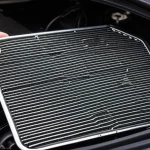Essential Differences in MOT Requirements for Electric and Diesel Vehicles
Understanding UK vehicle MOT requirements with a focus on electric vs diesel MOT distinctions
The MOT test differences in the UK arise primarily due to the inherent differences in vehicle propulsion systems—electric and diesel engines operate on distinct principles, which influence how their compliance is evaluated under UK regulations. While the MOT test universally aims to ensure road safety and environmental standards, recent updates reflect adaptations tailored to each vehicle type’s characteristics.
Also read : Maximize your miles: pro driving strategies for peak fuel economy
For electric vs diesel MOT, the major distinction lies in the components inspected. Diesel vehicles undergo rigorous testing for exhaust emissions, such as particulate matter and nitrogen oxides, due to their combustion engines. Conversely, electric cars have no tailpipe emissions, so their MOT focuses more on electrical safety and structural integrity rather than traditional exhaust emission standards. Brake systems, lights, suspension, and tires remain crucial checkpoints for both types.
These differences in MOT requirements affect vehicle owners and buyers significantly. Owners of diesel vehicles must monitor emission components more closely to pass the MOT, potentially incurring higher maintenance costs. Electric vehicle owners benefit from fewer emission-related tests but must ensure that battery health and electrical systems remain in good condition. For buyers, awareness of these MOT test differences in the UK can influence purchasing decisions, especially considering long-term compliance and maintenance implications under the evolving UK vehicle MOT requirements.
Also read : Comprehensive guide: ensuring your custom car meets uk emissions standards
Understanding these divergences enables better preparation for MOTs and helps both owners and buyers navigate the regulatory landscape with confidence.
Detailed MOT Test Components: Diesel Versus Electric
When discussing the MOT checklist, understanding the distinctions between diesel and electric vehicles is crucial. The most notable difference lies in emissions testing. Diesel cars undergo stringent emissions testing focused on exhaust pollutants like nitrogen oxides and particulate matter. In contrast, electric vehicles are exempt from traditional emissions testing since they produce no tailpipe emissions. This exemption streamlines the electric car MOT, but other inspection areas remain just as thorough.
Diesel car MOT inspections include detailed checks of the exhaust system for leaks, corrosion, and proper functioning of emission control devices. For electric cars, the focus shifts to electrical safety assessments. Inspectors examine high-voltage cables, battery condition, and ensure there are no signs of damage or corrosion that could affect performance or safety.
Brake and suspension checks apply to both vehicle types, but nuances exist. Diesel vehicles typically have conventional braking systems, so tests ensure brake pads, discs, and fluid meet standards. Electric vehicles may feature regenerative braking systems alongside physical brakes. Therefore, the MOT checklist for electric cars includes checks on these systems to verify efficient operation and safety. Suspension and steering components are also scrutinized to maintain roadworthiness in both diesel and electric models.
By tailoring the MOT checklist to address key differences like emissions testing and electrical safety, the examination accurately reflects each vehicle’s unique characteristics. This targeted approach ensures that both diesel and electric cars meet safety standards while acknowledging the environmental advantages of electric vehicles.
Costs and Practical Implications for Vehicle Owners
When considering MOT test costs, electric and diesel cars often show notable differences. Electric vehicles usually attract slightly lower fees due to fewer emissions tests and simpler mechanical components. For diesel vehicles, the MOT test can be more comprehensive, focusing heavily on emissions and exhaust systems, which may increase costs.
Maintenance implications frequently arise during MOT inspections. Diesel cars, for example, often reveal issues with their fuel injectors, turbochargers, or particulate filters. These components require regular upkeep, impacting overall diesel car maintenance expenses. In contrast, electric vehicles have fewer moving parts to check, significantly reducing mechanical wear and tear. This aspect contributes to lower maintenance-related costs over time.
Long-term ownership considerations hinge on these findings. EV owners can typically expect lower ongoing servicing bills, translating to more predictable running costs. However, the cost of replacing batteries remains an essential factor in electric car running costs. Diesel owners should budget for more frequent visits to the garage, given the complexity of internal combustion engines and their emission systems, which MOT tests rigorously assess.
Understanding these distinctions helps in planning both financially and practically for vehicle ownership, balancing initial purchase price with ongoing maintenance implications discovered through MOT experiences.
Concise Summary Table: Key MOT Distinctions Between Vehicle Types
Understanding essential differences for UK vehicle owners
The MOT comparison table below emphasizes the key distinctions in MOT testing between electric and diesel vehicles under UK regulations. This side-by-side summary equips vehicle owners with a clear reference, spotlighting exemptions, test durations, costs, and specialized checks.
| Feature | Electric Vehicles | Diesel Vehicles |
|---|---|---|
| Exemptions | Exempt from emissions testing | Subject to full emissions test |
| Test Length | Typically shorter due to fewer parts | Full duration owing to emissions and components inspections |
| Costs | Slightly lower average fee | Standard fee reflecting complex checks |
| Unique Checks | Battery health assessment | Diesel particulate filter (DPF) inspections and smoke tests |
The key distinctions MOT UK reveal that electric vehicles benefit from reduced emissions scrutiny, leading to shorter and often less costly MOTs. Diesel vehicles, conversely, undergo additional rigorous checks relevant to combustion engines — such as particulate filter integrity and emissions compliance.
For owners deciding between vehicle types, this MOT comparison table clarifies how maintenance and regulatory burdens differ, which can influence ownership costs over time. The electric vs diesel vehicle summary underlines that while electric cars have simpler MOT requirements, their battery systems demand attention during inspections. Meanwhile, diesel vehicles face complex emission control evaluations, impacting both test length and cost.
By focusing on these important facets, this summary aids drivers in making informed decisions aligned with their priorities, whether emphasizing environmental impact, upkeep costs, or regulatory compliance.


